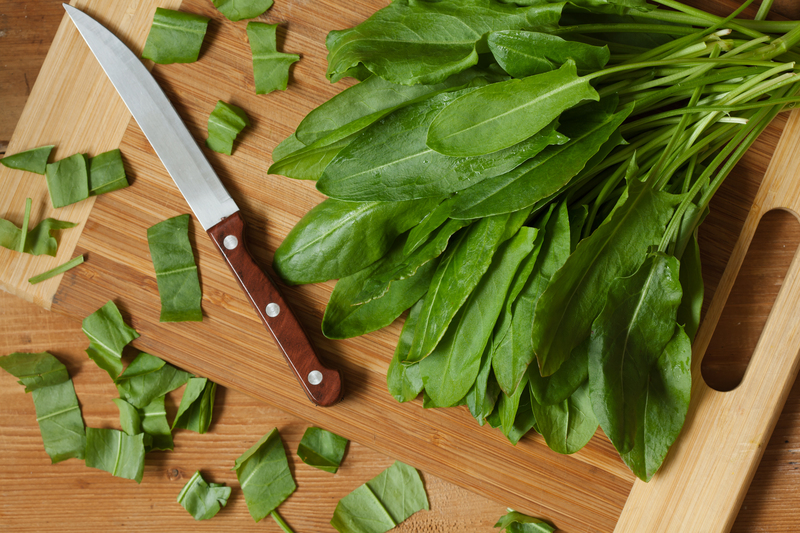Wind in the Willows: Creating a Sheltered Plant Paradise
Posted on 22/08/2025
Wind in the Willows: Creating a Sheltered Plant Paradise
Gardening enthusiasts and aspiring green thumbs know that powerful winds can threaten even the most robust of plants. While gentle breezes help with pollination and stagnation prevention, strong gusts can leave a swath of battered stems, snapped seedling, and torn leaves. Creating a sheltered garden paradise is essential for maintaining a diverse, healthy landscape that thrives even when the wind howls. Drawing inspiration from Kenneth Grahame's literary classic "Wind in the Willows", your garden can become a safe haven, where plants and wildlife flourish protected from wind exposure.

Why Create a Sheltered Plant Paradise?
Strong winds can cause significant damage to gardens in various ways. They can:
- Bend or snap stems and branches
- Strip plants of leaves
- Cause soil erosion
- Dry out soil and plants faster
- Disrupt pollinators and beneficial insects
By sheltering your plant paradise, you enhance the health, productivity, and longevity of your greenery. A wind-protected garden also creates a more peaceful space for relaxation and enjoyment, allowing your garden to echo the tranquility and sanctuary found in "Wind in the Willows".
Understanding Your Wind Exposure
Before you design your own sheltered haven, it's essential to analyze the wind patterns on your property. Consider:
- Which direction does the prevailing wind come from in your area?
- Are there existing natural features (trees, hedges, buildings) that already buffer some winds?
- Do you have microclimates within your garden - are some spots calmer or more turbulent?
- When does wind become a problem: all year or specific seasons?
Take a walk around your space on a blustery day, noting where wind is strongest and where it feels more sheltered. This invaluable information will guide your choices for windbreaks, shelterbelts, and strategic plantings--crucial elements in crafting your protected willows-inspired sanctuary.
Windbreaks: The First Line of Defense
Types of Windbreaks for Your Garden
Windbreaks work by slowing and deflecting wind, reducing its speed and energy before it hits your precious plants. There are two main types of windbreaks:
- Living Windbreaks: These are fully natural and involve planting rows of trees, shrubs, or hedges to create a living shield.
- Structural Windbreaks: Fences, walls, trellises, or pergolas act as immediate and often more permanent barriers to wind.
Emulating the willow groves and water-loving shrubs from "Wind in the Willows" not only adds a literary charm but harnesses the wind-dampening power of layered, leafy plants.
Choosing the Best Plants for Living Windbreaks
Willows themselves are, unsurprisingly, a superb choice. Fast-growing and flexible, they can form dense, beautiful barriers. But don't limit yourself! Include a mix of the following for tiers of protection and year-round interest:
- Dogwoods (Cornus): Colorful stems in winter, dense in summer
- Elders (Sambucus): Rapid-growing, wildlife-attracting blossoms and berries
- Hawthorns (Crataegus): Tough, thorny, with spring blooms
- Hazelnuts (Corylus): Dense, multi-stemmed form
- Roses (Rosa rugosa): Hardy, thick, classic hedging rose
- Pyracantha: Evergreen spiny shrub, berries for birds
Pro tip: Planting a double or triple row of staggered shrubs and trees, with the largest at the back, provides maximum wind-stopping force and creates a valuable wildlife corridor. Underplant with ornamental grasses and perennials for further insulation.
Structural Windbreaks: Smart, Stylish Options
If your garden is too small for full hedgerows, or you need instant protection while your windbreak grows, try:
- Lattice fences - allow some airflow and reduce turbulence
- Willow or hazel hurdles - rustic, natural fencing that's in keeping with the "Wind in the Willows" theme
- Pergolas or arbors - covered with climbers, provide shelter for seating or delicate plants
- Trellis screens - train flowering vines (clematis, honeysuckle) for a living barrier
Remember, a solid wall causes wind to whip around the sides and over the top, sometimes causing more harm than good. A semi-permeable barrier (about 50% open) slows wind more effectively, creating calm zones behind it.
Plant Selection: Building a Windproof Canvas
Not all plants mind the wind, but many will suffer. When choosing the backbone of your sheltered plant paradise, consider:
- Flexible-stemmed, wind-tolerant species -- Willows, lavenders, ornamental grasses
- Ground cover -- Creeping thyme, sedum, ajuga to prevent soil erosion
- Low-growing shrubs -- Boxwood, heather, potentilla which resists wind drag
- Woodland perennials -- Ferns, hosta, primula thrive in the calm of windbreak zones
Pro tip: Place the most sensitive plants (tender annuals, vegetables, young trees) in the heart of your shelterbelt system for maximum protection, just as Mole would find the coziest nook by the Riverbank.
Layering for Maximum Shelter
Channel the dappled understorey aesthetics of "Wind in the Willows" by planting in layers:
- Tallest windbreak trees/shrubs at the edge (willow, hazel, dogwood)
- Mid-height shrubs (elder, hawthorn, hydrangea)
- Perennials and smaller bushes (hosta, lavender, globe thistle)
- Ground covers (thyme, violets, ajuga)
This mirrors nature's design, reducing wind speed at every level and providing a haven for birds, insects, and your most prized flowers.
Design Ideas for a Sheltered "Willows" Retreat
Layout Inspiration
- Orient garden beds with their shortest side facing the prevailing wind to minimize exposure.
- Create suntraps - a U-shaped or L-shaped layout with windbreaks on exposed sides braced with walls or shrubbery.
- Use water features - a nod to the famous riverbank, adding humidity and further buffering wind for delicate plants.
- Install natural "rooms" using low hedges or screens, each providing protection for specialty plantings (herbs, roses, shade lovers).
- Include winding paths lined with grasses, ferns, and willows for a storybook stroll through your tranquil sanctuary.
Enhancing Wildlife and Biodiversity
Emulate the magic of Wind in the Willows by welcoming wildlife into your wind-protected garden:
- Plant berrying and flowering shrubs for birds and pollinators
- Integrate a small pond, attracting frogs, dragonflies, and birds--plus a nod to Ratty and friends
- Set up bee hotels and log piles for beneficial insects and sheltering beetles
- Add clumps of wildflowers (oxeye daisy, knapweed, red campion) between sheltering shrubs
Wind-Protection Techniques Beyond Planting
Even with the perfect planting plan, supplemental tactics can help create a truly sheltered plant paradise:
- Mulch heavily: Prevent soil erosion and evaporation with bark, compost, or gravel
- Stake sensitive plants: Young trees and tall flowers need extra support in exposed years
- Install cloches or cold frames: Shield delicate seedlings from spring gales
- Use temporary shade screens: Horticultural fleece or windbreak mesh for new plantings
- Regular pruning: Maintain the health and structure of your green windbreak

Seasonal Care for a Thriving Sheltered Garden
Spring
- Prune hedges and windbreaks before birds start nesting
- Protect new shoots and seedlings with mesh or temporary shelter
- Monitor for wind damage after storms and remedy with staking or extra supports
Summer
- Maintain mulch to conserve moisture
- Water sheltered areas deeply; windbreaks can reduce rainfall penetration
- Harvest and deadhead to keep the garden vibrant
Autumn
- Inspect windbreaks for any gaps or damage; replant bare spots
- Gather fallen leaves for wildlife piles or compost
- Plant bulbs for spring color in your protected borders
Winter
- Check for wind-damaged branches after severe storms
- Reinforce supports as needed for evergreens and young trees
- Feed birds and provide shelter as food becomes scarce
Conclusion: Cultivating Beauty and Calm in Your Wind in the Willows Garden
Building a sheltered plant paradise is more than just practical; it evokes the gentle magic of "Wind in the Willows"--a place where lush leaves never suffer from bitter winds, and peace reigns among wildflowers and willow fronds. Through strategic windbreaks, layered plantings, and a thoughtful layout, your garden will become a safe haven for plants, wildlife, and your own relaxation. With patience, planning, and a touch of storybook creativity, you too can create a garden where even the blusteriest day is transformed into a breezy sigh among the reeds.
Whether you're tending a sprawling landscape or a pocket-sized urban plot, protecting your plants from the wind will help you achieve that coveted riverside tranquility--your very own sheltered plant paradise.

